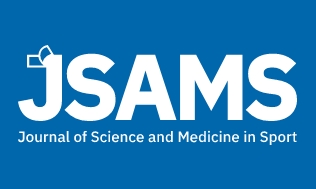Coutts AJ1,2, Quinn J2, Hocking J2, Castagna C3, Rampinini E4
1, School of Leisure, Sport and Tourism, University of Technology, Australia;2,Essendon Football Club, Australia;3, School of Sport and Exercise Sciences, University of Rome Tor Vergata, Italy;4, Human Performance Laboratory, S.S. MAPEI, Italy

There is little information describing the match running demands of elite-level Australian Rules Football (AF). The aims of this study were to examine: (1) match running demands; and (2) the influence of periods of increased physical activity on subsequent running performance in the Australian Football League. Time-motion analyses were performed 1-9 times per player from 16 professional AF players from the same club during games in 2005-2007, using portable global positioning systems during 65 matches. Game movements (standing, walking, jogging, running, higher-speed running, and sprinting) and distances (total distance covered [TD]; low-intensity activity [LIA, distance <14.4kmh-1]; and, high-intensity running distance [HIR, distance>14.4kmh-1]) were collected. The influence of the first half physical activities on second half activities, and each quarter on the subsequent quarter were analysed. The mean (+/-SD) TD and HIR distance covered during the games were 12,939+/-1145m and 3880+/-663m respectively. There were reductions in TD in the second (-7.3%), third (-5.5%) and fourth (-10.7%) quarters compared to the first quarter (p<0.01). The HIR was reduced after the first quarter (p<0.001). Players that covered larger TD or HIR during the first half or quarter decreased distance in the next half and quarter, respectively (p<0.001). These results show that a reduction in exercise intensity is inevitable during an AF match and that higher intensity activities reduce towards the end of games. High average speed during each half or quarter also affects subsequent running performance in elite-level AF.
J Sci Med Sport. 2010 Sep;13(5):543-8.
PMID: 19853508 DOI: 10.1016/j.jsams.2009.09.004